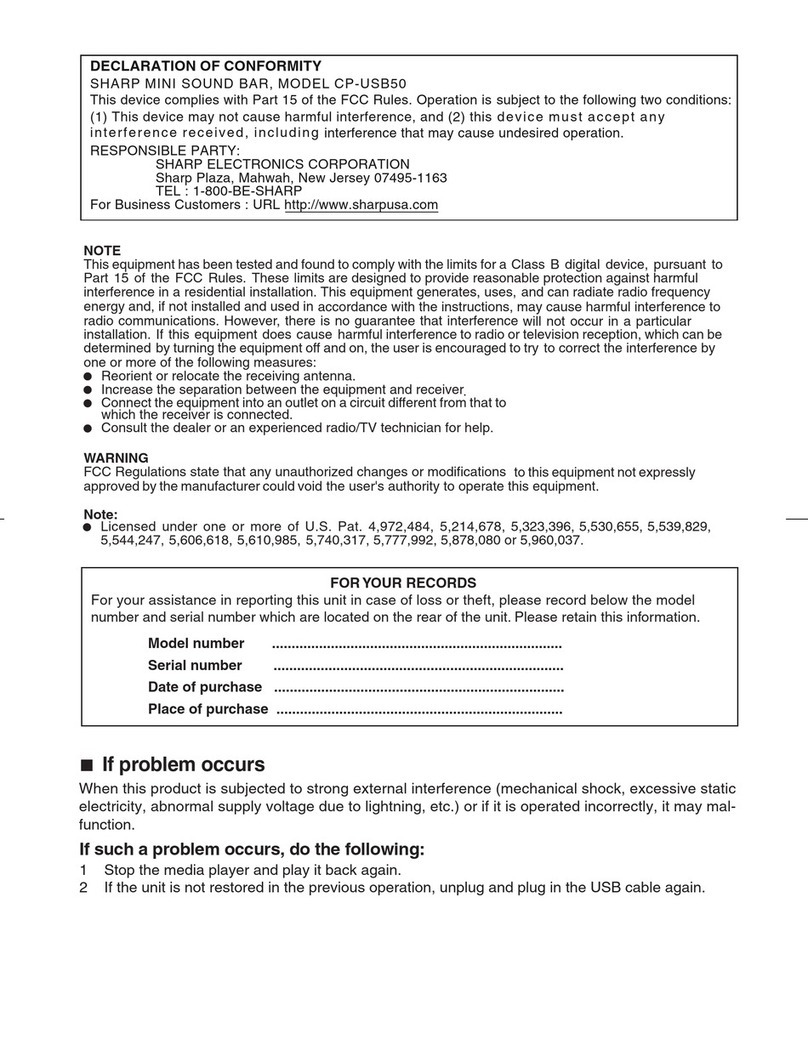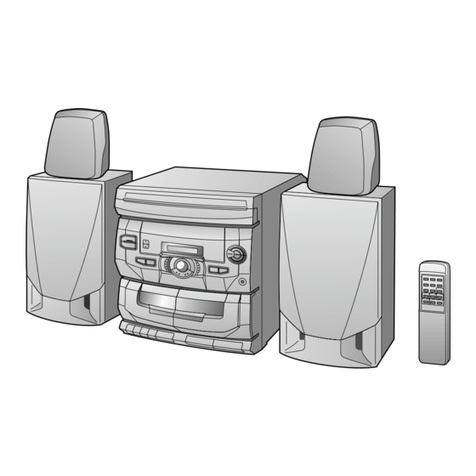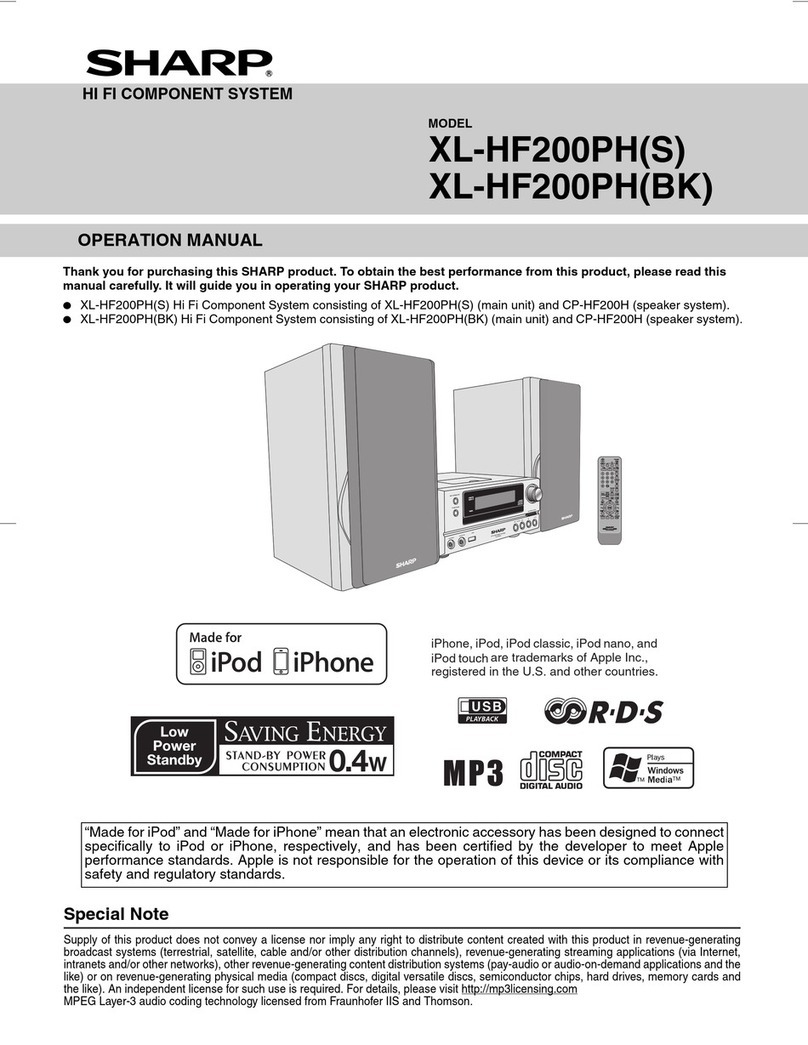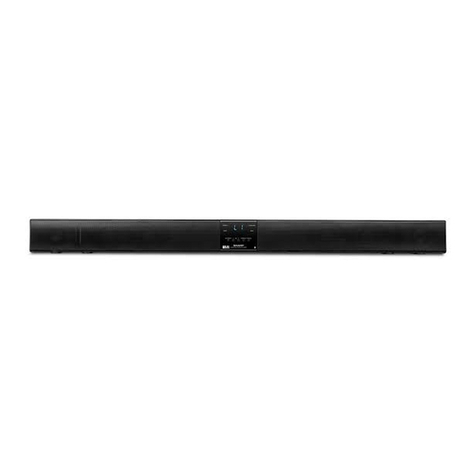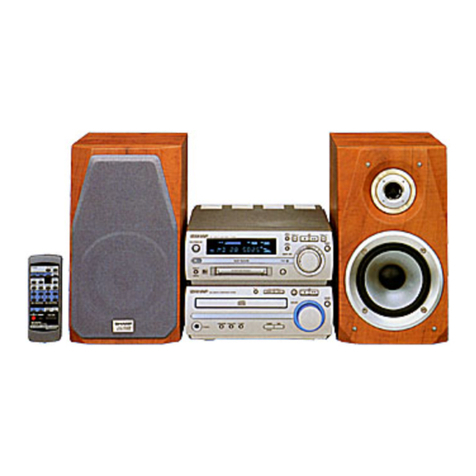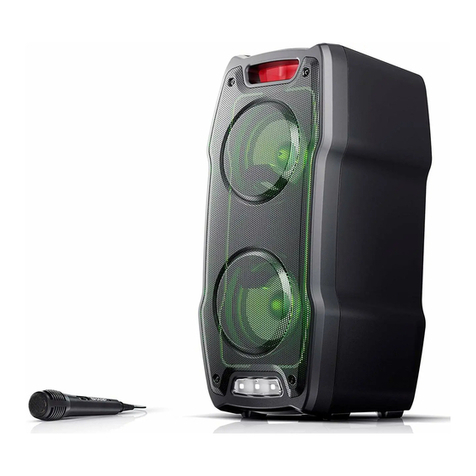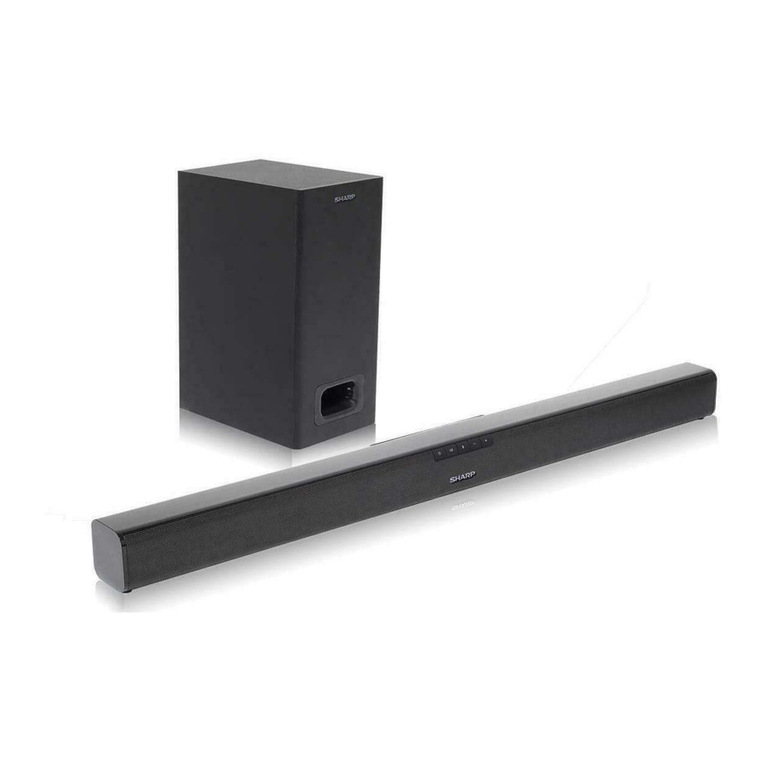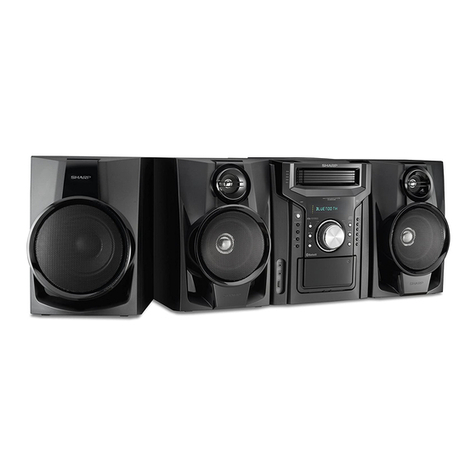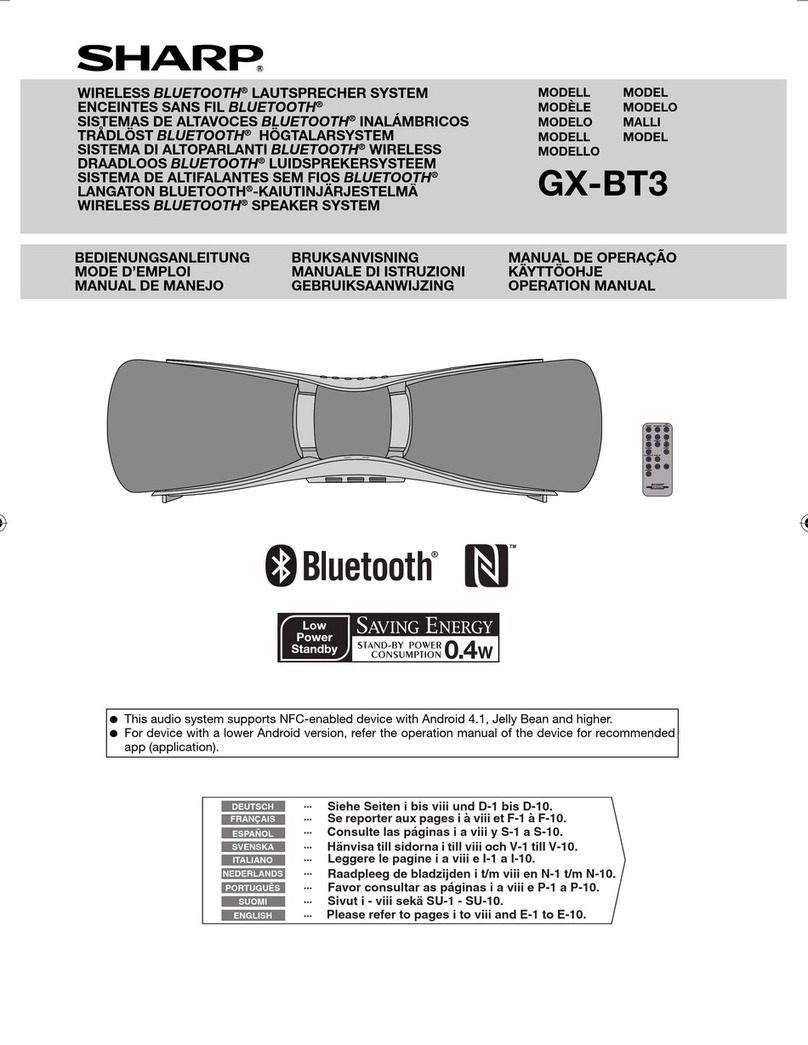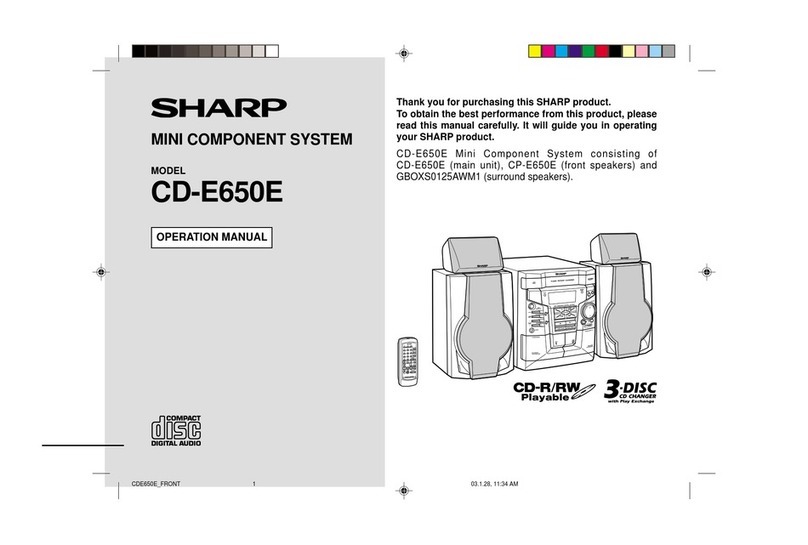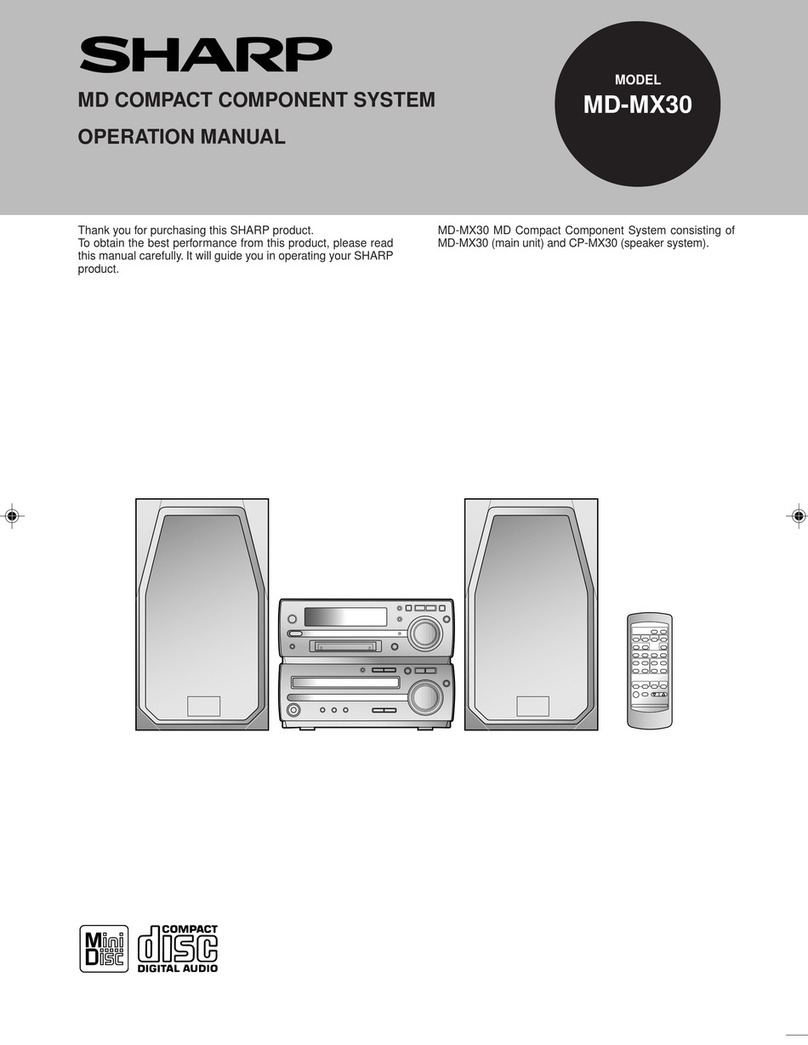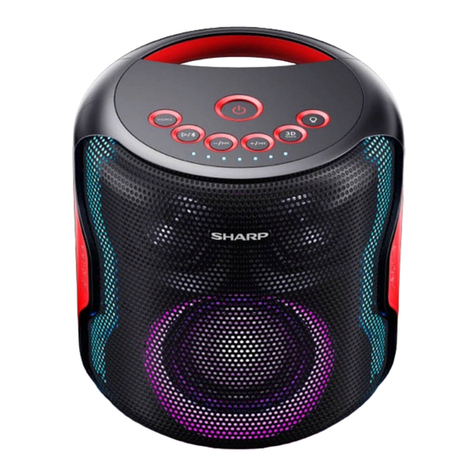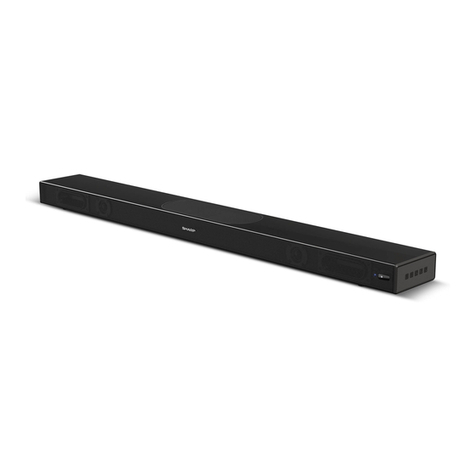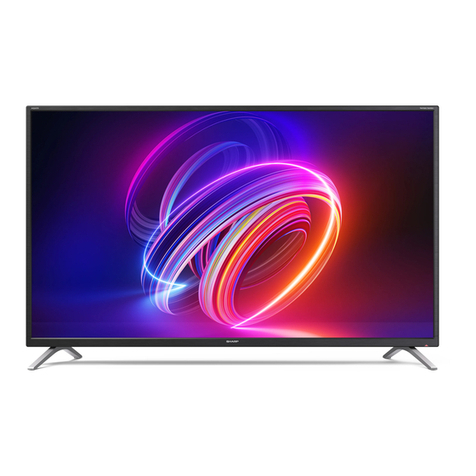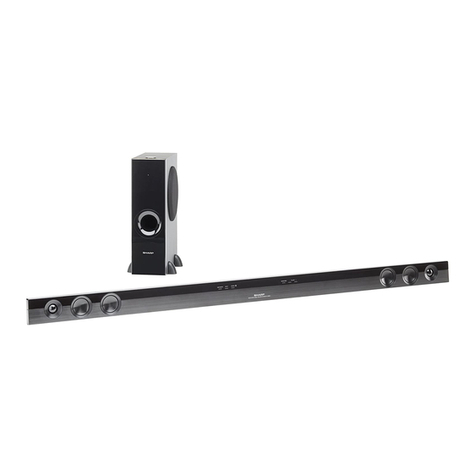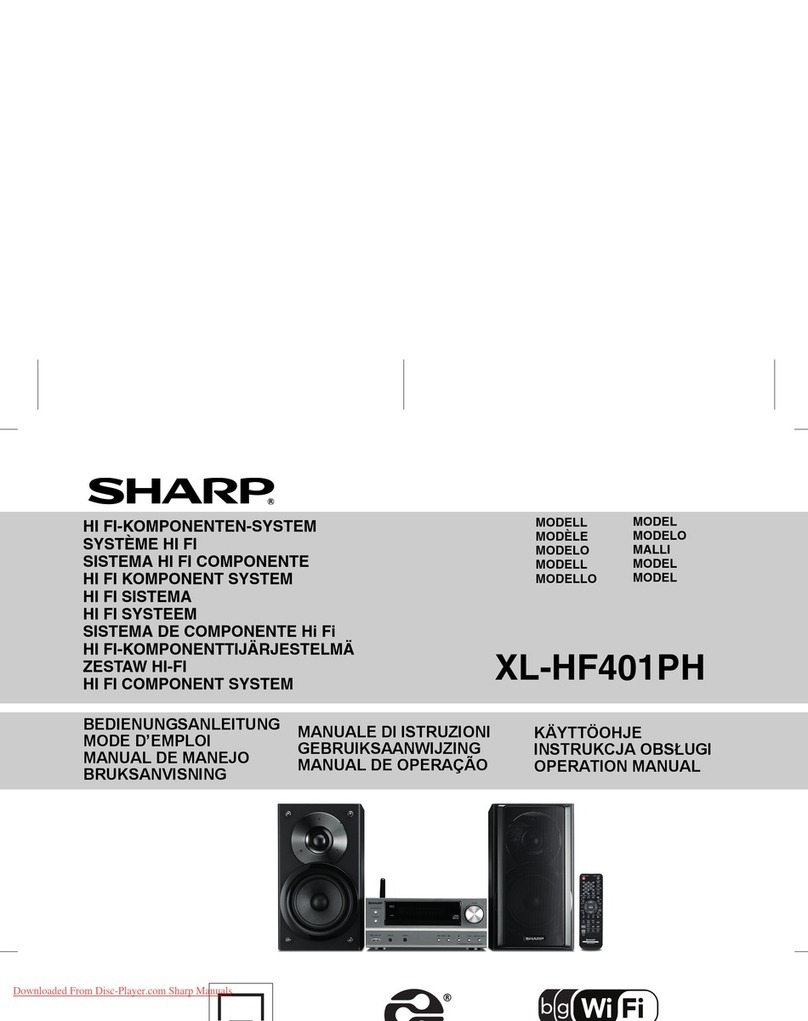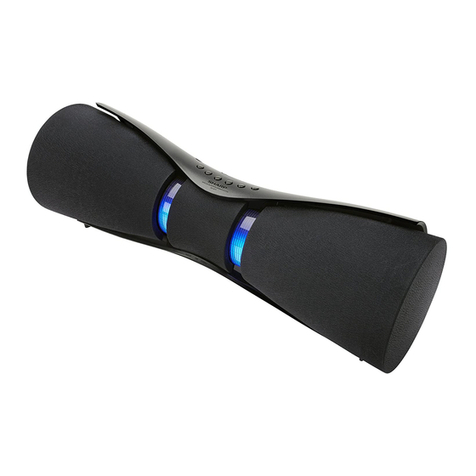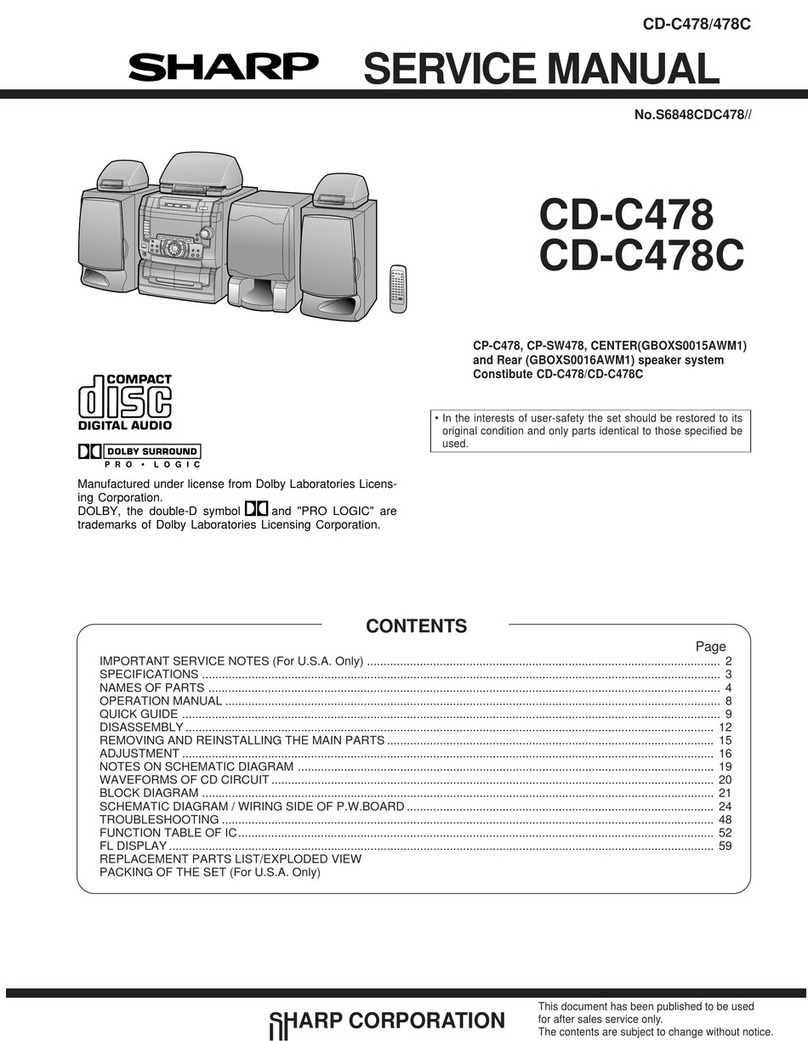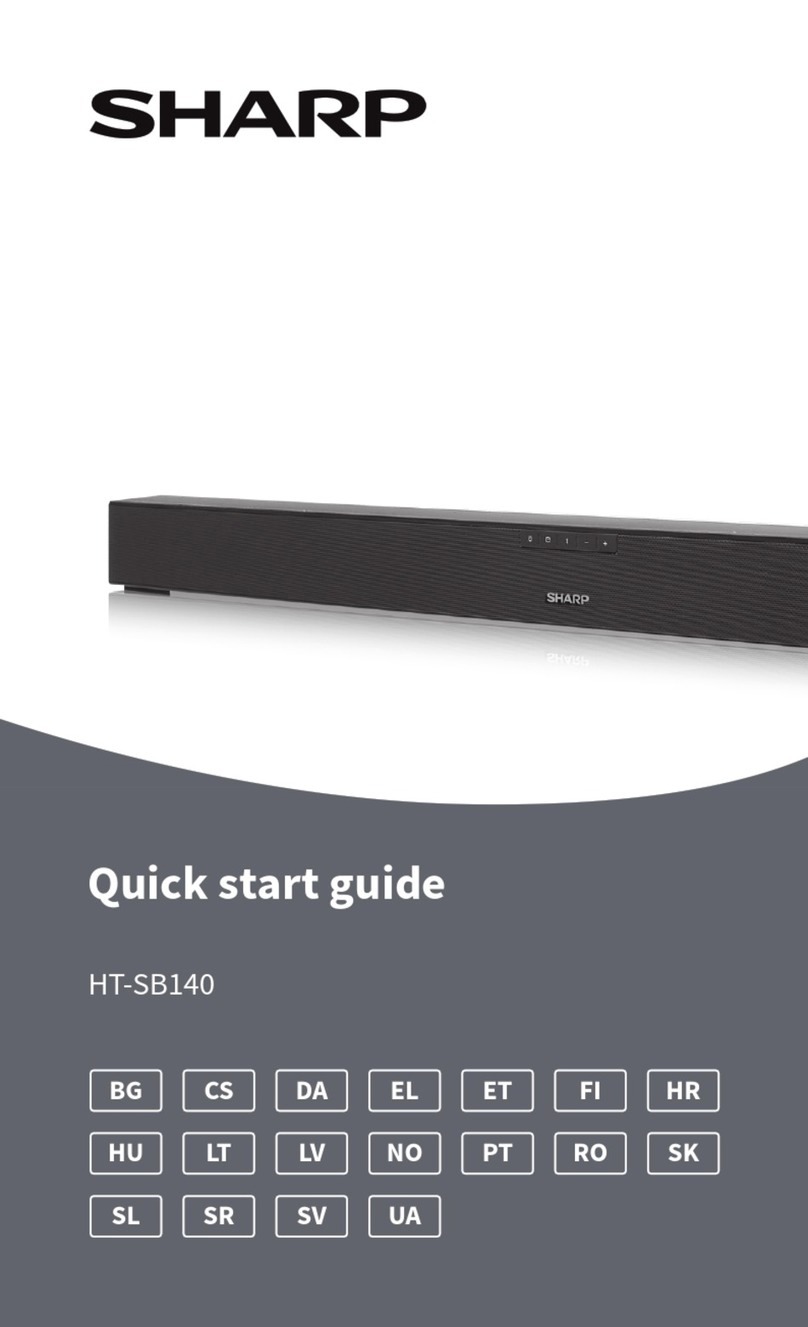CD-C472/C3400/C3400C/C3800/C3800C
– 8 –
DISASSEMBLY
Caution on Disassembly
Follow the below-mentioned notes when disassembling
the unit and reassembling it, to keep it safe and ensure
excellent performance:
1. Take cassette tape and compact disc out of the unit.
2. Be sure to remove the power supply plug from the wall
outlet before starting to disassemble the unit.
3.Takeoffnylonbandsorwireholderswheretheyneedbe
removed when disassembling the unit. After servicing
theunit,be sure torearrangethe leadswherethey were
before disassembling.
4. Take suffcient care on static electricity of integrated
circuits and other circuits when servicing.
Figure 8-2
Figure 8-3
CD-C472/C3400/
C3400C/C3800/C3800C
1 Top Cabinet 1. Screw ..................... (A1) x4 8-1
2 Side Panel 1. Screw ..................... (B1) x6 8-1
(Left/right) 2. Screw ..................... (B2) x2
3 CD Player Unit/ 1. Turn on the power supply, 8-2
CD Tray Cover open the disc tray, take out
the CD cover, and close.
(Note 1)
2. Hook....................... (C1) x3
3. Hook....................... (C2) x2
4. Screw ..................... (C3) x1
5. Socket .................... (C4) x2
4 Back Board 1. Screw ..................... (D1) x9 8-2
2. Socke ..................... (D2) x1
5 Main PWB 1. Screw ..................... (E1) x1 9-1
2. Socket .................... (E2) x2
3. Flat Wire................. (E3) x1
4.Tip Wire................... (E4) x1
5.Socket ..................... (E5) x1
6 Front Panel 1. Screw ..................... (F1) x2 9-1
7 Display PWB/ 1. Socket .................... (G1) x1 9-2
Switch PWB 2. Screw .....................
(G2) x13
8 Tape Mechanism 1. Open the cassette holder. 9-2
2. Screw...................... (H1) x5
9
Power Amp. PWB
1. Screw ..................... (J1) x3 9-3
2. Socket .................... (J2) x2
10 Turntable 1. Screw ..................... (K1) x1 9-4
2. Cover ..................... (K2) x1
11 Disc Tray 1. Screw ..................... (L1) x2 9-4
2. Guide ..................... (L2) x2
12 CD Player Unit 1. Screw ..................... (M1) x1 9-5
2. Socket .................... (M2) x4
13 CD Changer 1. Screw ..................... (N1) x4 9-6
Mechanism 1. Screw
14 CD Mechanism 1. Screw ..................... (P1) x1 9-6
STEP REMOVAL PROCEDURE FIGURE
Note 1:
How to open the changer manually. (Fig. 8-3)
1. Insert the tip of fine screwdriver into the hole of CD player
base, and press down the worm wheel < A > .
2. Then, turn fully the lock lever in the arrow direction through
the hole on the loading chassis bottom in this state.
After that, push forward the CD player base.
CD-C472/C3400/
C3400C/C3800/C3800C
Figure 8-1
( B1 ) x2
ø3 x8mm
( B2 ) x2
ø3 x8mm ( B1 ) x2
ø3 x8mm
Top Cabinet
Side Panel
(Right)
Rear Panel
Side Panel
(Left)
( A1 ) x2
ø3 x12mm
( A1 ) x2
ø3 x12mm
CD Tray Cover
CD Player Unit
( D1 ) x2
ø3 x10mm
( D1 ) x7
ø3 x8mm
( C3 ) x1
ø3 x8mm
Hook
( C1) x3
( C2 ) x1
( D2 ) x1
( C4 ) x2
Back Board
Main PWB
Front Panel
1
1
2
A
Pull
(C2) x1
